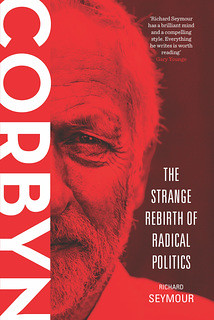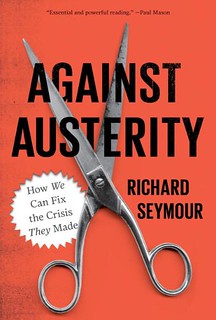Thursday, February 26, 2009
Colonial Urbanism posted by Richard Seymour
This is a few loosely connected thoughts and observations, prompted by the sudden, intense sensation, while on the DLR to Greenwich last week, of travelling through occupied territory. The Xanadu-like compound that is Canary Wharf was the topic of an earlier post, and here I just revisit some of its themes.
But green-zoning, as elaborate and other-wordly as it seems, is hardly new. The Third World was built on the basis of such topographical entities, informed by bodies of racial knowledge. The outposts of formal empire replicated European town structures, the better both to provide settlers with a familiar environ and to exclude 'natives'. Both states and companies accumulated considerable expertise in this practise, just as in general they were adept in devising the appropriate geographies for managing labour. Although this was often part of a genocidal process (in Australia and North America), colonists in 19th and 20th Century Africa usually practised segregation the better to super-exploit the locals, either tacitly or explicitly. This was particularly the case in those urban areas which the colonists made their headquarters. As Ambe J. Njoh describes it ("The segregated city in British and French colonial Africa", Race and Class, 2008; 49; 87), colonial town planners sought to develop spaces environments that were fit for capital accumulation and which reflected the perceived cultural superiority of the colonists. The very fact that the colonisers and the indigenous lived in such different conditions was then ascribed to an insurmountable cultural gulf, as well as to pathological factors (as when British planners in South Africa or Sierra Leone denigrated the native population as vectors for deadly diseases). Urban African dwellers were maintained in carefully charted segments of the urban environment where they could be kept under surveillance. Such segregation was not only racial, of course: it also maintained the white proletariat in separate, inferior living quarters.
Segregation was also a norm when the American state (in the Panama Canal Zone, for example) and American companies (Fordlandia in Brazil, the working environments for oil companies in Dhahran, the Niger Delta, Jakarta and so on) set about devising new urban environments appropriate to its mode of imperial dominance. Congruent with the paternalism of the 'Progressive' era and beyond, these Arcadian developments in the Canal Zone reproduced islets of suburbia for a white labour aristocracy (those on the 'Gold Roll'). A complex of townships and military installations asserted America's colonial possession. Every asset was owned by the state, and white American workers - in contrast to the enormous West Indian and African American labour stratum - were provided with every amenity, including free housing and healthcare, and superior schools, for which they paid no taxes. West Indian and African American workers, of course, received none of these perks, being on the 'Silver Roll'. All urban facilities were organised along racial lines, much as they were in the Jim Crow south. The same was true of the banana producing enclaves in Central America, where white Americans resided in airy bungalows secluded from the local workforce, whose wooden shanties often had mud floors.
Robert Vitalis, writing on the global oil frontier, notes that American companies such as Texaco, Chevron, Exxon and Mobil, the major partners in Aramco and thus central to America's 'special relationship' with the House of Saud, had accumulated decades of experience in developed segregated practises in the Jim Crow south and applied precisely the same techniques of segregation, wage differentials, and race management wherever they went. In these cases, white workers comprised the more skilled, managerial and privileged sectors of the workforce, and were provided with modern housing and facilities. Arab labour was put up in huts, and remunerated poorly. As Vitalis also notes, when Aramco had to eventually abandon its explicit segregationist policies, under pressure both from Arab labour struggles and from liberal capital represented by Nelson Rockefeller, it sought to bury its racism, and redescribe its differential treatment in market terms. But the means by which segregation was effected and rationalised were frequently market-based, enforced through 'racially-laden' policies rather than openly exclusionary directives. Thus, for example, it was possible to retard indigenous development by legislating that the best land be developed exclusively with imported European materials, driving up the market price. Similarly, segregated labour in turn-of-the-century south Africa was initially based on the migrant labour system. Having created the conditions by which certain segments of labour are subordinated, it is always possible to reproduce these effects through market transactions. Indeed, barring massive intervention into the labour market, the rule is that they will be. And much the same geographies will persist, as they do in post-apartheid south Africa.
That the evil paradises of yesteryear were explicitly racialised, and that today they are not, hardly means that the effects of that ascriptive hierarchy are no longer discernible in the geography of capital accumulation, as a quick perusal of Mike Davis' Planet of Slums would suggest. It is no accident, though, that the residents of gentrified (class-upgraded) zones across the world resemble a colonial elite themselves. In the cities of advanced capitalist societies the rich, having 'discovered' groovy niches in the metropolitan landscape, convert them into colonies of the upper bourgeoisie, drive up mortgage costs and rents, and send working class residents fleeing to other densely populated locales that have not yet had the misfortune to arouse the desire of hipster capitalists. Either that, or they get pushed out into overspill areas. In the cities of the very Third World that was created by colonialism, as well as in formerly Second World countries, the presence of Western (or Westernised) social elites generates its palatial green zones, carefully secluded and robustly secured from the slums that provide the labour force. These lifeworlds seem 'natural' to us when we grow up in them. They become alien, and alienating, when such colonial restructuring makes it obvious just how much intelligence has gone into creating them, and just how much they seem designed to keep us in our place.
Labels: cities, colonialism, evil paradises, gentrification, racism, segregation, urban planning










